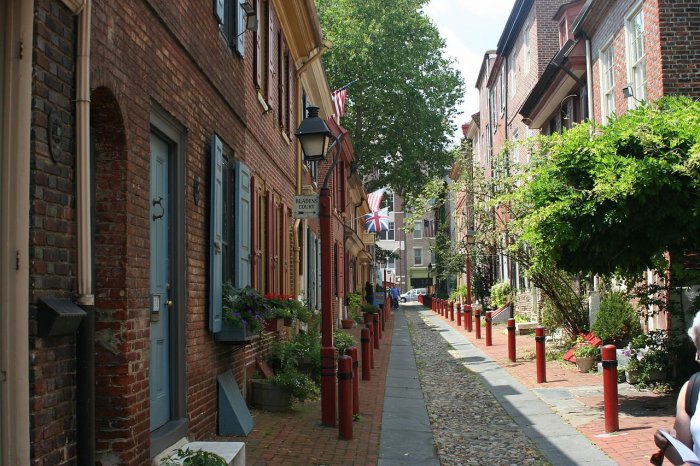Nestled amidst the architectural marvel of the Barbican Centre, the Barbican Conservatory beckons visitors into a verdant sanctuary where nature’s artistry flourishes. Its unique design, diverse plant collections, and captivating programs make it a horticultural haven that inspires, educates, and connects with the community.
Step inside this glass-enclosed oasis and embark on a botanical journey that transports you to distant lands and introduces you to an extraordinary array of plant life.
Barbican Conservatory History
The Barbican Conservatory, an architectural masterpiece nestled within the Barbican Centre in London, has a rich history marked by innovation, dedication, and a deep appreciation for nature.
In the 1960s, as part of the ambitious Barbican redevelopment project, the visionary architects Chamberlin, Powell and Bon, in collaboration with landscape architect Peter Shepheard, conceived the idea of an indoor conservatory. Their vision was to create a sanctuary amidst the concrete jungle, a place where visitors could escape the urban hustle and bustle and immerse themselves in the beauty of the natural world.
The Barbican Conservatory, a tropical haven in the heart of London, boasts an impressive collection of exotic plants. A journey through its lush greenery transports you to distant lands. From the Amazon rainforest to the arid deserts of Bandelier National Monument , the conservatory showcases the incredible diversity of the natural world.
Back in the Barbican, the serene atmosphere and vibrant colors provide a tranquil escape from the urban hustle and bustle.
Construction and Design
Construction of the Barbican Conservatory commenced in 1974 and was completed in 1982. The unique design of the conservatory showcases a steel-framed geodesic dome, a marvel of engineering that allows for maximum sunlight penetration and creates an airy, spacious environment for the diverse plant collection.
Architectural Features: Barbican Conservatory
The Barbican Conservatory boasts a distinctive architectural design that sets it apart from other conservatories. Its unique features contribute to its overall functionality and aesthetic appeal.
The conservatory’s structure is primarily composed of steel and glass, providing both strength and transparency. The steel framework supports the glass panels, which allow natural light to flood the interior, creating an optimal environment for the plants.
Materials and Construction Techniques
- Steel Framework: The steel framework provides a robust and durable support system for the conservatory’s glass panels and overall structure.
- Glass Panels: The extensive use of glass panels allows for maximum natural light penetration, creating a bright and airy environment conducive to plant growth.
- Curved Roof: The conservatory’s curved roof design optimizes natural light distribution and rainwater drainage, ensuring the well-being of the plants.
Plant Collections

The Barbican Conservatory houses a diverse collection of plants from around the world, organized into distinct zones to reflect different climatic regions. These zones include the Tropical Rainforest, Desert, Mediterranean, and Temperate regions.
The plants are arranged in a visually stunning manner, creating a captivating and immersive experience for visitors. Rare and endangered species are carefully integrated into the displays, highlighting the conservatory’s commitment to conservation and showcasing the fragility of our planet’s biodiversity.
Barbican Conservatory is an amazing place to visit, with its diverse collection of plants and flowers. It’s a great place to relax and enjoy the beauty of nature. And if you’re looking for a fun and affordable way to spend a day and chennai , then Barbican Conservatory is the perfect place for you.
Tropical Rainforest
- Features a wide variety of tropical plants, including towering palms, lush ferns, and vibrant orchids.
- Houses rare and endangered species such as the giant water lily (Victoria amazonica) and the Madagascar periwinkle (Catharanthus roseus), known for its medicinal properties.
Desert
- Displays an array of cacti and succulents adapted to arid conditions, including the iconic saguaro cactus (Carnegiea gigantea).
- Includes unique species such as the living stones (Lithops spp.), which resemble small pebbles.
Mediterranean
- Showcases plants native to the Mediterranean region, including olive trees, rosemary, and lavender.
- Features a large collection of citrus trees, representing the region’s rich culinary heritage.
Temperate
- Displays plants from temperate climates, including camellias, azaleas, and ferns.
- Houses a collection of seasonal plants, offering visitors a changing display throughout the year.
Educational and Cultural Programs

The Barbican Conservatory offers a diverse range of educational and cultural programs that engage visitors and promote environmental awareness. These programs cater to various age groups and interests, providing opportunities for learning, inspiration, and community involvement.
Interactive Workshops and Guided Tours
The Conservatory hosts interactive workshops that cover topics such as plant science, biodiversity, and sustainable gardening. These hands-on experiences allow visitors to engage with the plant collections and learn about their unique characteristics and ecological importance. Guided tours led by expert horticulturalists provide in-depth insights into the history, design, and plant life of the Conservatory.
School Programs
The Conservatory offers tailored educational programs for schools, aligned with the national curriculum. These programs focus on fostering scientific inquiry, environmental awareness, and creativity. Students participate in interactive activities, guided tours, and workshops designed to spark their interest in botany and the natural world.
Community Events, Barbican conservatory
The Conservatory hosts community events that bring people together to celebrate nature and promote well-being. These events include plant exhibitions, art installations, live music performances, and family-friendly activities. By creating a welcoming and inclusive environment, the Conservatory encourages community engagement and a shared appreciation for the beauty and importance of the natural world.
Conservation and Sustainability
The Barbican Conservatory is committed to conservation and sustainability, implementing numerous initiatives to protect the environment and promote biodiversity.
The conservatory actively participates in conservation programs, collaborating with organizations like Plant Heritage and the Millennium Seed Bank to preserve rare and endangered plant species.
Sustainable Practices
The conservatory employs sustainable practices to reduce its environmental footprint. These include:
- Utilizing rainwater harvesting systems to conserve water.
- Implementing energy-efficient lighting and heating systems.
- Promoting recycling and composting to minimize waste.
Biodiversity and Environmental Stewardship
The Barbican Conservatory plays a vital role in promoting biodiversity by providing a haven for a diverse range of plant species. Its collections include plants from various ecosystems worldwide, contributing to the preservation of genetic diversity.
Immerse yourself in the vibrant greenery of Barbican Conservatory, an architectural marvel that showcases diverse plant life. If you’re seeking an exotic escape, consider our bali holiday packages to explore the lush rainforests, pristine beaches, and ancient temples of this Indonesian paradise.
Upon your return, revisit the tranquility of Barbican Conservatory, where you can reconnect with nature amidst the bustling city.
Through educational programs and outreach initiatives, the conservatory fosters environmental stewardship, inspiring visitors to appreciate the importance of plant conservation and sustainable living practices.
Visitor Experience
The Barbican Conservatory offers a unique and immersive experience for visitors of all ages. The space is designed to provide an educational and engaging environment, where visitors can learn about different plant species and their habitats.
The conservatory features a variety of amenities and services to enhance the visitor experience. These include guided tours, educational programs, and a café. Visitors can also purchase plants and souvenirs from the on-site shop.
Amenities and Services
- Guided tours are available daily and provide visitors with an in-depth look at the conservatory’s plant collections.
- Educational programs are offered throughout the year and cover a variety of topics, such as plant identification, gardening, and conservation.
- The café offers a variety of food and drinks, including sandwiches, salads, and pastries.
- The shop sells a variety of plants, souvenirs, and gardening supplies.
Artistic and Cultural Significance

The Barbican Conservatory has become a hub for artistic and cultural expression, inspiring a wide range of creative minds.
Its unique architectural design and diverse plant collections have captivated the imaginations of artists, designers, and architects. These creatives have drawn inspiration from the conservatory’s geometric forms, lush greenery, and serene atmosphere.
Art and Design
- The conservatory’s geometric architecture has influenced the work of contemporary artists such as Anish Kapoor and Olafur Eliasson, who have incorporated similar shapes and patterns into their sculptures and installations.
- Designers have been inspired by the conservatory’s plant life, using its textures and colors in fashion, textiles, and interior design.
Architecture
The Barbican Conservatory has also had a profound impact on the field of architecture. Its innovative design has influenced the construction of other conservatories and botanical gardens worldwide.
Architects have studied the conservatory’s use of natural light, ventilation, and temperature control, incorporating these principles into their own designs for sustainable and energy-efficient buildings.
Future Plans and Developments
The Barbican Conservatory is constantly evolving to enhance the visitor experience and promote conservation. Future plans include:
- Upgrading the Conservatory’s infrastructure, including improved lighting, temperature control, and accessibility features, to provide a more comfortable and immersive experience for visitors.
- Expanding the educational and cultural programs, offering a wider range of activities and workshops tailored to different age groups and interests.
- Collaborating with other institutions and organizations to share knowledge and resources, and promote conservation efforts.
These developments aim to make the Barbican Conservatory a more dynamic and engaging space for visitors, while also strengthening its role as a center for conservation and education.
Visitor Experience
The upgraded infrastructure will enhance the visitor experience by providing a more comfortable and immersive environment. Improved lighting will showcase the plants in their best light, while better temperature control will ensure a pleasant visit regardless of the weather. Accessibility features will make the Conservatory more accessible to visitors with disabilities.
Conservation
The expansion of educational and cultural programs will help to raise awareness about conservation issues and inspire visitors to take action. Collaborations with other institutions and organizations will allow the Conservatory to share knowledge and resources, and to contribute to global conservation efforts.
Community Role
The Barbican Conservatory’s future plans and developments will strengthen its role as a center for conservation and education in the community. By providing a more engaging and accessible experience, the Conservatory will attract a wider audience and inspire a new generation of conservationists.
End of Discussion
The Barbican Conservatory is not merely a botanical showcase but a living testament to the power of nature to captivate, inspire, and foster a deeper appreciation for the environment. As it continues to evolve and innovate, this urban oasis will undoubtedly remain a beloved destination for generations to come.
FAQ Explained
What is the history behind the Barbican Conservatory?
The Barbican Conservatory was constructed as part of the Barbican Centre, a brutalist architectural complex built in the 1970s. It was designed by architects Chamberlin, Powell and Bon, and opened to the public in 1982.
What types of plants are housed in the Barbican Conservatory?
The Barbican Conservatory features a diverse collection of over 2,000 plant species from around the world. These include tropical plants, succulents, cacti, ferns, and carnivorous plants.
What educational programs are offered at the Barbican Conservatory?
The Barbican Conservatory offers a range of educational programs for all ages, including guided tours, workshops, and talks. These programs focus on plant science, biodiversity, and the importance of conservation.




